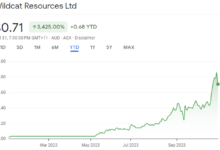MultiCap Funds Vs FlexiCap funds – How Are They Different

When it comes to investing in mutual funds, one of the key decisions investors need to make is choosing the right type of mutual fund. Two popular options that often come up for consideration are Multicap funds and Flexicap funds. While both offer diversification and the potential for good returns, they have some key differences that can impact your investment strategy. In this article, we will explore the distinctions between Multicap funds and Flexicap funds, helping you make an informed decision about where to invest your money.
What are multicap funds?
Multicap mutual funds, as the name suggests, are diversified equity funds that invest in stocks across various market capitalizations. These mutual funds typically allocate their assets in a manner that spans large-cap, mid-cap, and small-cap stocks. The allocation among these categories can vary, depending on the fund manager’s strategy and market conditions.
One of the primary advantages of multicap funds is their ability to adapt to changing market dynamics. They have the flexibility to shift their investments between different market segments based on prevailing conditions. For instance, if the fund manager believes that mid-cap stocks are offering better opportunities than large-cap stocks, they can increase the allocation to mid-caps.
Investors in multicap funds benefit from the fund manager’s expertise in identifying investment opportunities across the market. This means that they don’t have to make individual stock selections or market-cap decisions themselves. The fund manager takes care of these aspects, making MultiCap Funds a convenient choice for those who prefer a hands-off approach to investing.
What are Flexicap funds?
Flexicap mutual funds, on the other hand, are a relatively newer category of mutual funds introduced by the Securities and Exchange Board of India (SEBI) in 2020. These mutual funds offer a high degree of flexibility to the fund manager in terms of asset allocation. They can invest across market capitalizations, similar to multicap funds, but the key difference is that they are not bound by any specific allocation requirements.
Flexicap funds are designed to provide the fund manager with the freedom to invest where they see the best opportunities in the market. This means they can allocate more to large-cap stocks when they seem attractive or pivot towards mid-cap and small-cap stocks if those segments appear more promising.
The primary advantage of Flexicap funds is their ability to adapt quickly to market changes. If there’s a shift in the investment landscape, fund managers can swiftly adjust their portfolios without being constrained by predetermined allocation ratios. This flexibility can potentially lead to better returns, but it also entails higher risks, as it depends heavily on the manager’s ability to make the right calls.
The key differences:
Now that we’ve covered the basics of Multicap funds and Flexicap funds, let’s delve into the key differences:
1. Regulatory Framework: Multicap funds have a regulatory mandate to invest in stocks of various market capitalizations, with specific minimum allocations to each category. On the other hand, Flexicap funds have no such regulatory restrictions and can freely allocate their assets.
2. Flexibility: Flexicap funds offer more flexibility in terms of asset allocation, allowing fund managers to make dynamic decisions based on market conditions. Multicap funds have some flexibility but are within the confines of their regulatory allocation requirements.
3. Risk and Return: Flexicap funds may offer the potential for higher returns due to their flexibility, but they also come with higher risks. Multicap funds are relatively more stable, as they maintain a balance between different market segments.
4. Investor Involvement: Multicap funds are suitable for investors who prefer a more hands-off approach, as the fund manager handles allocation decisions. Flexicap funds may be more appealing to those who want more active involvement in their investment choices.
Conclusion:
In summary, Multicap funds and Flexicap funds are both attractive options for mutual fund investors, and the choice between them largely depends on your risk tolerance, investment goals, and level of involvement. Multicap funds offer stability and diversification, while Flexicap funds provide greater potential for higher returns but come with increased risk. To make an informed decision, it’s essential to assess your financial objectives and consult with a financial expert to determine which type of fund aligns best with your investment strategy. Additionally, it’s now easier than ever to invest in mutual funds online, making the process convenient and accessible to a wider range of investors.








